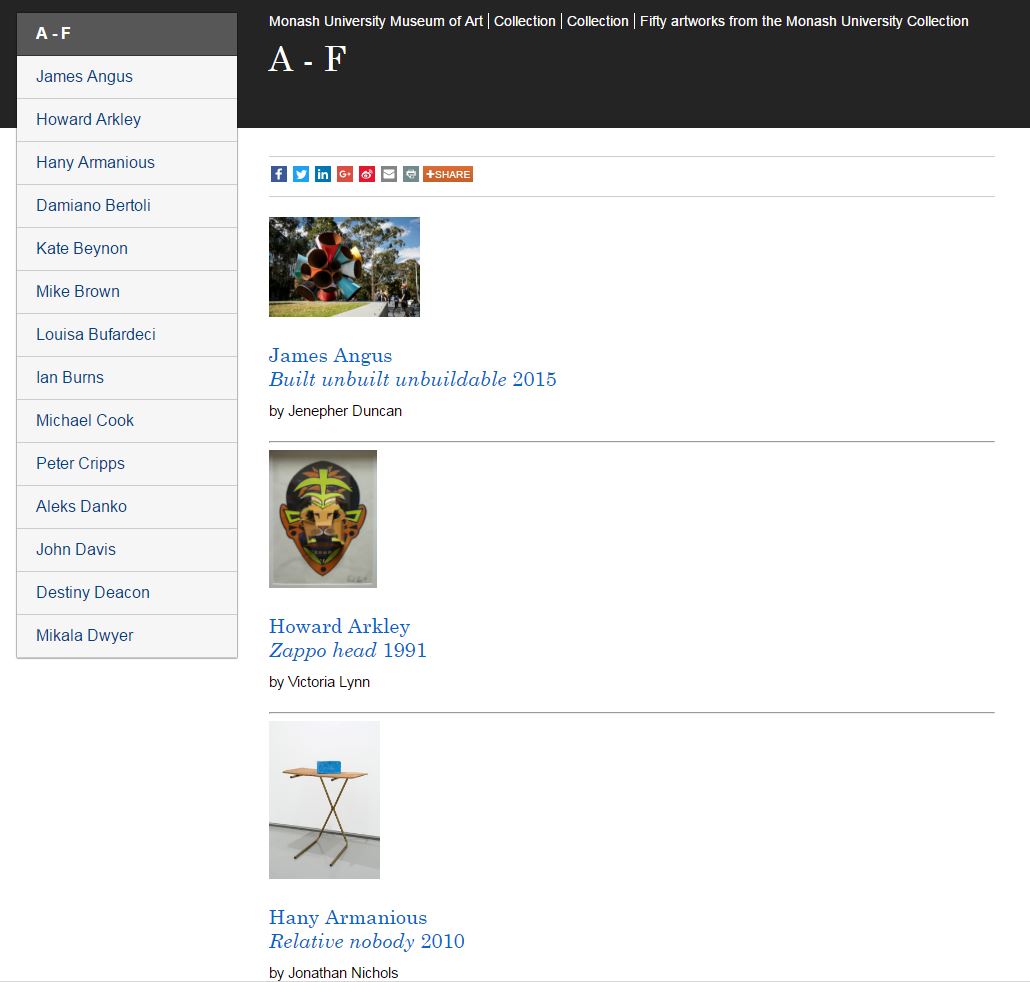An issue of Art History with a focus on Feminist Approaches in Art History. Spanning forty years of the journal’s archive, in this virtual issue Victoria Horne gathers together a selection of the feminist interventions that have been previously published in Art History.
As the organ of the UK’s disciplinary association, Art History created a set of conditions (conditions that were of course abraded and negotiated) for a specific, especially public, and influential articulation of the feminist intellectual project. I hope that the selection of articles that comprise this virtual issue gives a suitably diverse view of feminism’s effects in this specific context. There was no science to my selection, but I tried to ensure a fairly even spread in terms of time, and to choose essays that showcase distinctive approaches, for example biographical recovery, gendering of historiography, dress and self-fashioning. I included one artist interview, which is notable for both its uncommon format and for inserting the rarely heard voices of this journal’s Irish neighbours. In terms of media, included writings address moving-image, painting, installation, and performance, the diversity of which demonstrates feminism’s comprehensive analytical reach. I have left out more widely reproduced articles because I assume these are already well-known, and where two or more articles overlap in subject matter or approach, I have simply chosen one.26 A whole other issue could be dedicated to the excellently provocative book reviews, which I have not included here. As well as a logical focus on women’s art practice, the main theme to recur throughout is the represented female body as a site at which deep psychic, national, cultural, and historical anxieties about race, gender, and class converge, and are negotiated. Although each article deserves analysis, I will not summarize the content and methods here, but leave the reader to reach her own conclusions.
Someone else would have made a different selection. However, my hope is that the articles presented here provide a pleasurable and expansive view of feminist effects upon the art-historical landscape in the UK over the past four decades – and, in their diversity, provide a decisive sense of how entrenched that alteration of perspective has been. The ‘periodical landscape’ of 2021 is changed substantially from 1978, as are broader conditions; art-historical research is increasingly foreclosed by marketization and a managerial ethos, by deepening austerity and the yet-to-be-experienced repercussions of the COVID pandemic. However, many of the ambitions and desires of politically committed researchers have remained constant. If ‘we are making our own art history’, it is still vital to ask what that does and could look like. Academic journals play a role in shaping careers and debates, influencing disciplinary enquiry, and establishing (shifting) epistemic limits, making it vital to consider and weigh the institutional apparatus of journals themselves. Those liberational calls to change art history, not to settle with additions but to compel transformations, serve as powerful reminders that the discipline, like our academic institutions, does not exist beyond us; we constitute them in our actions, our research, our publishing and reading.
Articles
- Feminist Approaches in Art History: Considering the Periodical Archive Victoria Horne
- Suitcase Aesthetics: The Making of Memory in Diaspora Art in Britain in the Later 1980sDeborah Cherry
- Sexing the Canvas: Calling on the Medium Nicholas Chare
- From Women’s Work to the Umbilical Lens: Mary Kelly’s Early Films Siona Wilson
- The Serial Spaces of Ana Mendieta Susan Best
- Visceral Culture: Blushing and the Legibility of Whiteness in Eighteenth-Century British Portraiture Angela Rosenthal
- Phallic Victories? Niki de Saint-Phalle’s Tirs Jill Carrick
- Hybrid Histories: Alice Maher Fionna Barber
- Corporeal Theory with/in Practice: Christine Borland’s Winter Garden Marsha Meskimmon
- Mediating Generation: The Mother-Daughter Plot Lisa Tickner
- Despoiled at the Source Rebecca Zorach
- Retrieving Warburg’s Tradition Margaret Iversen
- Fashion, Femininity and the Fight for the Vote Katrina Rolley
- Woman as Sign in Pre-Raphaelite Literature: A Study of the Representation of Elizabeth Siddall Deborah Cherry and Griselda Pollock
- Seduction, Prostitution, Suicide: On the Brink by Alfred Elmore Lynda Nead
- The Case History of a Woman Artist: Henrietta Ward Pamela Nunn





